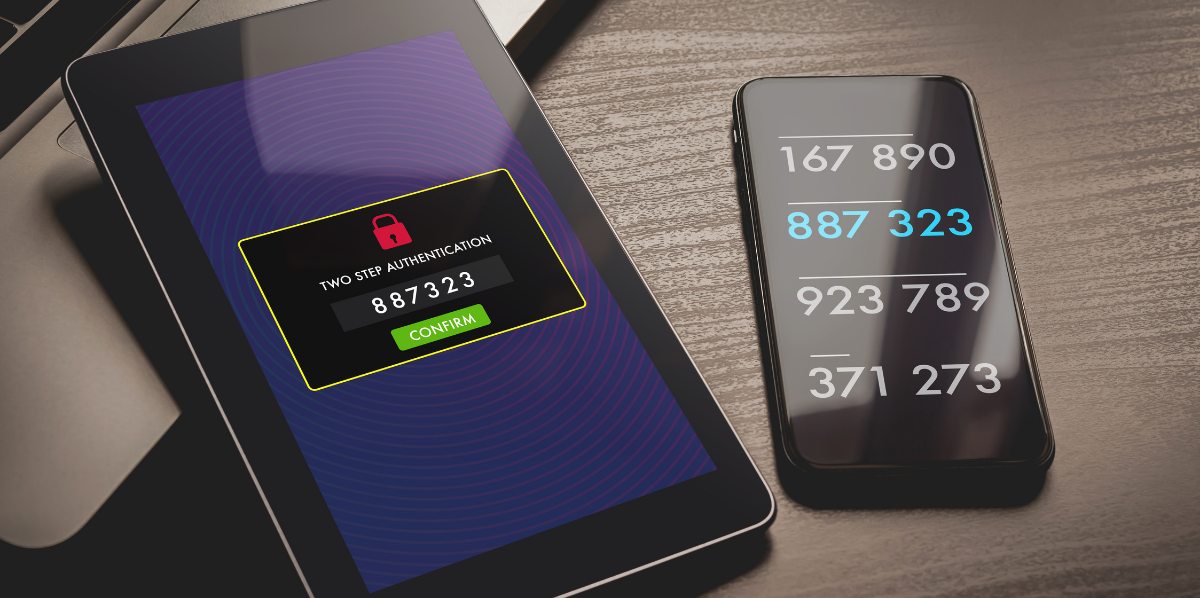To encrypt data to a server, you must convert the information into an unreadable form, or ciphertext, using an encryption key. This process involves selecting an appropriate encryption software and algorithm, generating strong encryption keys, and ensuring safe transmission and storage of the data on the server. Regularly updating and securely storing the keys enhances data protection.
In today’s digital age, securing data is of utmost importance. With cyber threats becoming increasingly sophisticated, protecting sensitive information from falling into the wrong hands is essential. One effective way to safeguard data is through encryption. I will explore the different aspects of data encryption and discuss the steps to encrypt data on a server.
Understanding Data Encryption

Data encryption converts information into an unreadable form, ciphertext, to prevent unauthorized access. It ensures that even if the data is intercepted, it remains incomprehensible to anyone without the decryption key. This powerful technique provides a layer of security that protects sensitive information such as personal data, financial records, and confidential documents.
Data encryption involves using cryptographic algorithms to transform plain text into cipher text. Cryptography employs mathematical operations to scramble the data so it can only be deciphered with the corresponding decryption key. This method guarantees the confidentiality and integrity of the information.
But how does data encryption work? Let’s take a closer look at the process. When encrypted, data goes through complex mathematical operations that rearrange the bits and bytes of the original information. This rearrangement makes it extremely difficult for anyone without the decryption key to make sense of the data. The encryption algorithms used are designed to be computationally intensive, making it even more challenging for unauthorized individuals to break the encryption.
One common encryption algorithm is the Advanced Encryption Standard (AES). AES is widely used and considered secure for encrypting sensitive data. It uses a symmetric key, meaning the same key is used for both encryption and decryption. This key is typically a long string of random characters, making it virtually impossible to guess or brute force.
Encryption plays a vital role in continuing data confidentiality. It provides peace of mind, knowing that even if an unauthorized person increases access to the data, they cannot decipher it without the appropriate decryption key. Whether personal information or sensitive business data, encryption helps prevent data breaches, identity theft, and other malicious activities.
Furthermore, data encryption also ensures data integrity. By encrypting data, any unauthorized modifications or tampering attempts can be detected. When the encrypted data is decrypted, the integrity check ensures that the data has not been altered during transmission or storage. This helps maintain the information’s trustworthiness and ensures it is not compromised.
In addition to confidentiality and integrity, data encryption also provides authentication. Encryption can be used to verify the sender’s identity and ensure that the data has not been tampered with during transit. This is particularly important when data is transmitted over insecure networks like the Internet. Encrypting the data makes it much more difficult for attackers to intercept and modify the information without being detected.
Overall, data encryption is a crucial component of modern information security. It supports protecting sensitive data from unauthorized access, maintains data integrity, and provides authentication. As technology advances, encryption algorithms and techniques will evolve to keep up with the ever-changing landscape of cybersecurity threats.
Types of Data Encryption
When it comes to protecting sensitive information, data encryption plays a crucial role. There are two key types of data encryption: symmetric and asymmetric. Understanding their differences and characteristics will help choose the appropriate encryption method based on specific requirements.
Symmetric Encryption
Symmetric encryption, also known as secret key encryption, is a method that utilizes a shared secret key for both encryption and decryption. The same key is used to scramble the data at the sender’s end and unscramble it at the receiver’s end. This method is efficient and fast since it does not require complex computations.
Imagine you have a confidential document that you want to send to a colleague. With symmetric encryption, you would use a secret key to encrypt the document before sending it. Once your colleague receives the encrypted document, they can use the same secret key to decode it and access the original content.
However, one of the challenges with symmetric encryption is securely sharing the secret key. If the key falls into the wrong hands, it can compromise the security of the encrypted data. Therefore, establishing a secure key exchange mechanism is essential to ensure the confidentiality of the shared key.
Asymmetric Encryption
Asymmetric encryption, also named public key encryption, is another widely used method for data encryption. Unlike symmetric encryption, asymmetric encryption utilizes two keys – a public key for encryption and a remote key for decryption.
Let’s say you want to send a confidential message to a friend using asymmetric encryption. You would use their public key to encrypt the message before sending it. Once your friend receives the encrypted message, they can use their private key to decrypt it and read the original content.
One of the significant advantages of asymmetric encryption is that the private key remains confidential, ensuring secure communication. Even if someone intercepts the encrypted message and obtains the public key, they won’t be able to decrypt it without the corresponding private key.
However, compared to symmetric encryption, asymmetric encryption is slower due to the computational complexity involved. Encryption and encryption require more computational power, impacting overall performance in certain scenarios.
Both symmetric and asymmetric encryption have their strengths and weaknesses, and the choice between them is contingent on various factors such as security requirements, computational resources, and key management. Understanding the characteristics of each encryption method is crucial for implementing an effective data protection strategy.
Steps to Encrypt Data

Encrypting data is crucial in ensuring the security and confidentiality of sensitive information. Following the proper steps can keep your data from unauthorized access and potential breaches. Let’s explore the process of encrypting data in detail.
Generating Encryption Keys
Before encrypting data, it is crucial to generate strong encryption keys. A robust encryption key should be long, complex, and unique to ensure maximum security. Utilize reputable key generators to create random keys resistant to brute-force attacks.
When generating encryption keys, it is important to consider the length of the key. The longer the key, the more secure the encryption will be. A common length for encryption keys is 128 bits, but you can opt for 256-bit keys for even stronger security. Additionally, it is essential to use a mixture of uppercase and lowercase letters, numbers, and special characters to create a complex key that is difficult to crack.
Furthermore, it is crucial to keep the encryption keys secure. Store them in a secure location, such as a password manager or a hardware security module (HSM), to prevent unauthorized access.
Encrypting Your Data
Once the encryption keys are ready, it is time to encrypt the data. Select a suitable encryption algorithm based on the level of security required. Implement the chosen algorithm using encryption software or programming libraries specifically designed for encryption.
Various encryption algorithms are available, each with strengths and weaknesses. Some popular encryption algorithms include Advanced Encryption Standard (AES), RSA, and Triple Data Encryption Standard (3DES). AES, in particular, is widely used and considered highly secure.
When encrypting data, it is important to consider the mode of operation. The mode of operation determines how the encryption algorithm is applied to the data. Common modes of operation include Electronic Codebook (ECB), Cipher Block Chaining (CBC), and Galois/Counter Mode (GCM).
The data is transformed using the encryption algorithm and the encryption key during the encryption process. This process converts the original data into ciphertext, unreadable without the corresponding decryption key.
Sending Encrypted Data
After encrypting, the data can be safely transmitted over the network to the intended recipient. Ensure the recipient possesses the appropriate decryption key to decipher the encrypted data. Be cautious when sharing encryption keys and consider using additional security measures such as secure channels or secure file transfer protocols for enhanced protection.
When sending encrypted data, it is important to consider the method of transmission. Secure channels, such as encrypted email or secure messaging platforms, can provide an extra layer of protection. Additionally, utilizing secure file transfer protocols, such as Secure File Transfer Protocol (SFTP) or Secure Shell (SSH) File Transfer Protocol (SCP), can ensure the secure transfer of encrypted files.
It is crucial to share the decryption key with the intended recipient securely. Consider using methods such as asymmetric encryption, where the encryption key differs from the decryption key. This way, you can share the encryption key publicly while keeping the decryption key private.
Furthermore, regularly updating encryption keys is recommended to maintain the security of encrypted data. By periodically generating new encryption keys and securely distributing them to authorized parties, you can minimize the danger of unauthorized access to sensitive info.
Choosing the Right Encryption Software

Factors to Consider
Selecting the right encryption software is crucial to achieving optimal data protection. Consider factors such as the encryption algorithm supported, compatibility with your server system, ease of use, and ongoing technical support. Choosing a reputable encryption software provider is essential to ensure the software’s reliability and security.
Popular Encryption Software
Various encryption software options are available in the market, each with its strengths and features. Some popular choices include AESCrypt, VeraCrypt, BitLocker, and PGP. Evaluate the software’s capabilities and user reviews to make an up-to-date decision based on your requirements.
Maintaining Encrypted Data
Encrypting data is not a one-time process; it requires ongoing maintenance to ensure effectiveness. Here are some best practices to follow:
Regularly Updating Encryption Keys
Periodically update encryption keys to mitigate the risk of key compromise. Implement a key rotation policy to generate new keys and securely replace the old ones. This practice enhances the security of the encrypted data even if an unauthorized person obtains an outdated key.
Ensuring Secure Storage of Keys
Store encryption keys in a secure site and restrict access rights to authorized personnel only. Consider employing hardware security modules or secure key management systems for enhanced protection; by safeguarding the encryption keys, the integrity and confidentiality of the encrypted data can be maintained.
Key Takeaways
- Importance of Encryption: Encryption protects sensitive data by converting it into unreadable ciphertext, ensuring data remains safe from unauthorized access.
- Types of Encryption: Symmetric encryption uses a shared secret key, while asymmetric encryption employs a public and private key pair.
- Key Management: Regularly updating and securely storing encryption keys is paramount to maintaining the effectiveness of data encryption.
- Software Selection: Choosing reputable encryption software, considering the supported algorithms, system compatibility, and user-friendliness, is vital for successful encryption.
- Ongoing Maintenance: Beyond the initial encryption, ongoing key updates, secure key storage, and periodic checks ensure long-term data protection.
FAQs
What is data encryption?
Data encryption is the method of changing readable data into a format (ciphertext) that can’t be understood without a corresponding decryption key.
What’s the difference between symmetric and asymmetric encryption?
Symmetric encryption uses the same key for encryption and decryption, while asymmetric encryption uses a public key for encryption and a private key for decryption.
How often should encryption keys be updated?
Regularly, based on a determined schedule or policy, to maintain data security and mitigate risks of key compromise.
Why is secure storage of encryption keys crucial?
Safeguarding encryption keys ensures the integrity and confidentiality of encrypted data, preventing unauthorized access.
What are some popular encryption software choices?
Some popular choices include AESCrypt, VeraCrypt, BitLocker, and PGP.
Conclusion
In conclusion, data encryption is a powerful technique for protecting sensitive info during transmission and storage. By implementing appropriate encryption methods, generating strong encryption keys, and choosing the right encryption software, you can enhance the security of your data. Remember to regularly update encryption keys and ensure secure storage to maintain the integrity and confidentiality of your encrypted data. Stay vigilant and take the necessary steps to secure your data, safeguarding against potential breaches and unauthorized access.
